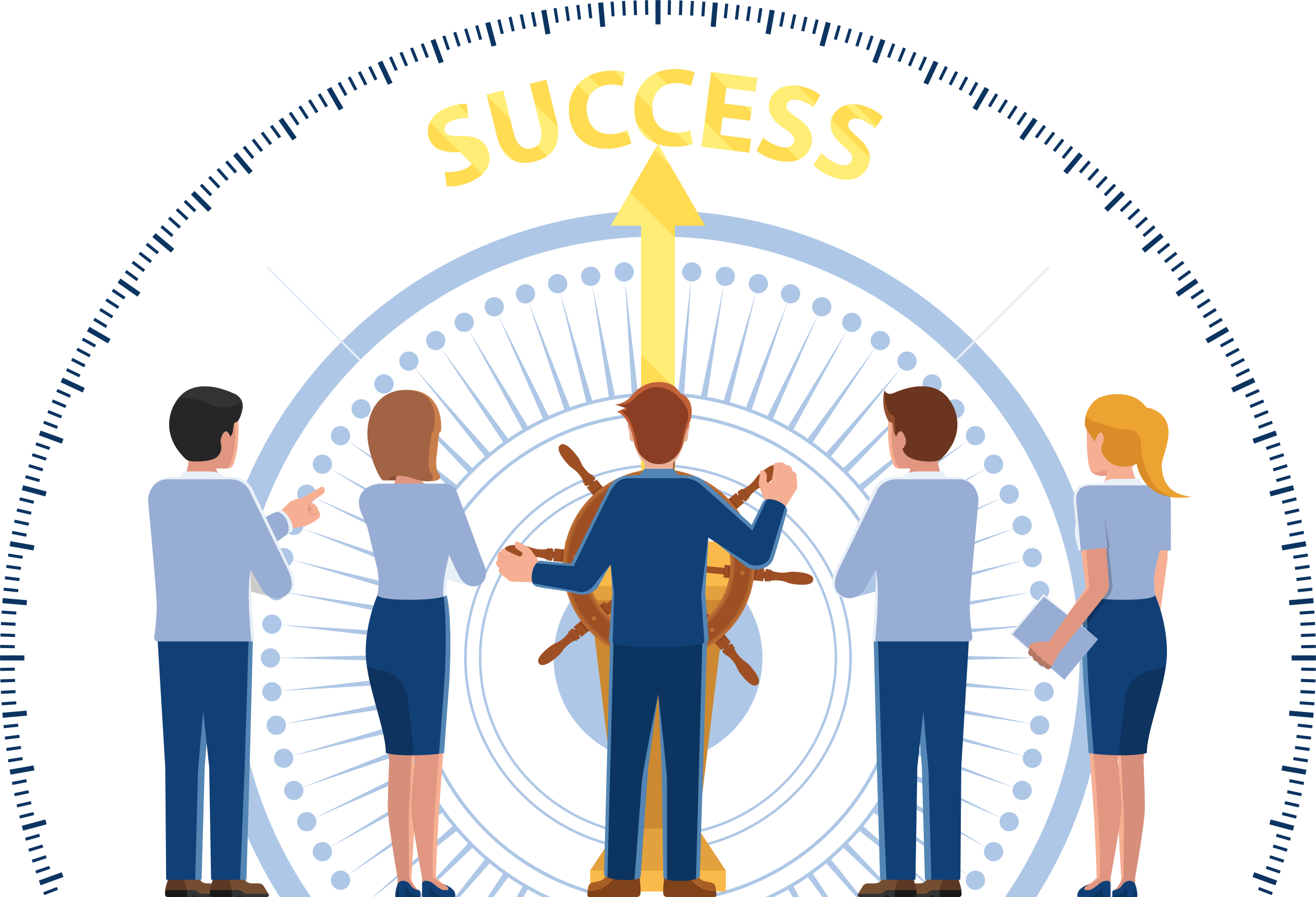Customer Success Management and Revenues – An Alternative Perspective
There has always been some discussion within the Customer Success Management community regarding the role that our profession does or should play when it comes to revenue generation.
The level of this discussion and the ratio of those who appear to believe that Customer Success Management should indeed be a source of revenue generation for the organization has increased over the years.
This is perfectly understandable. As a relative newcomer, Customer Success Management has always had to fight to prove its value to the business, and to defend itself against those that might criticize corporate investment in this additional and some might say unnecessary function. Naturally, one way to fight such criticism is to provide conclusive, hard, revenue-based evidence for its existence. The idea sounds appealing, but I believe that whilst superficially it might seem like a good idea, in fact it may not be the best approach.
Of course, there are a wide range of views and opinions held by an even wider range of subject matter experts from within the Customer Success Management profession. However, the overall argument for Customer Success Management as a primary source of revenue generation for the organization goes something like this:
By its nature, Customer Success Management entails the development of empathy and rapport with key stakeholders from within the customer organization, leading to strong trust relationships with those key stakeholders. It also entails the Customer Success Manager working closely alongside those key stakeholders, not just during the relatively short pre-sales period, but also throughout the entire customer journey from the moment the contract is signed through to the very last time the customer uses our product and/or service.
The argument goes that Customer Success Managers, therefore, are better placed than anyone else within the organization to hold purposeful conversations with these senior key stakeholders about a range of topics relating to not just the existing initiative, but to the potential for other initiatives as well.
With an existing initiative – and especially if it is the first initiative that this customer has brought us into as a new supplier – the concept behind the ‘land’ and ‘expand’ sales motions may be relevant.
With these sales motions, the initial ‘land’ motion tends to be of limited size and scale, because at this stage, we as a supplier are previously untested with this particular customer. This becomes their initial ‘test’ of us and our solution, which they can then use as a benchmark for their future expectations from us. Doing a good job during this initial phase is therefore very important. Of course, it is always important to do a good job, but during this initial phase, more may depend upon a high-quality result than just the initial value gained from its existing revenues, or even the additional value gained from a contract renewal of equal size.
This is where the ‘expand’ sales motion comes into play. Because the customer did not know us beforehand, they may well choose to be risk-averse by making just a small investment in this first initiative. They can then wait to see the results from this initial investment before making any larger-scale decision that may have wider implications if things do not run according to plan. By waiting to see how phase one goes before making this wider investment decision, the client shows a healthy, risk-averse attitude to financial investment.
Additionally, an established customer with whom the Customer Success Manager has worked for a meaningful length of time may now be ready for the “grow” sales motion. In the “grow” sales motion, we as the supplier will take it upon ourselves to sell the customer additional products and services to meet whatever other challenges or opportunities the customer may have that we believe our products and/or services can help them with. Doing this takes both a profound knowledge of the customer’s specific business and a great trust relationship with its senior stakeholders.
The argument therefore goes, that the CSM should be the one to bring up the topic of the customer’s wider and fuller needs (i.e. ‘expand’ and ‘grow’ sales motions) than those served during the initial investment. Because the CSM knows both the customer’s business and its key stakeholders, that CSM should be perfectly placed to sell the concept of the customer receiving greater levels of value from a larger scale investment at this stage when risk has now been mitigated through the production of evidence that proves value during the initial, lower scale investment. Also, because the CSM knows both the customer’s business and its key stakeholders, the CSM should be perfectly placed to sell the concept of additional products and services going to support other business initiatives that the customer does (or could) have.
It is further argued that to do this effectively, customer success managers should hold revenue targets for ‘expand’ and ‘grow’ sales motions in just the same way as we might expect sales professionals to hold for ‘land’ sales motions. Additionally, customer success managers should be remunerated at least in part through group or individual commissions based on revenues sold. This will, it is stated, provide the necessary incentive and motivation for CSMs to take the Sales aspect of their role seriously, and to perform these sales duties to an adequate standard.
I would like for a moment to take a step back from discussing customer success management in isolation, and instead take a look at how a business functions from a more holistic perspective. One way of looking at a business is to simplify it using a model. The value of this is that whereas (as we know only too well from our own experience) reality is often highly complicated in nature and contains much that is hidden and unknowable, a model can be understood relatively easily. Assuming that the model does successfully represent what happens in reality, we can then use this simplified version of reality (i.e. the model) to understand the highly complex reality in ways that would not otherwise be possible. For example, we could run various what-if scenarios through the model to see how it reacts, and from this make assumptions about how the real world would react if we were to take similar actions in the real world as we took in the scenarios.
One such business model is called Porter’s Value Chain. As the name implies, this model was first proposed by Harvard Business School professor Michael Porter back in the 70s. Even though perhaps 50 years have passed by this particular business model is still useful today, perhaps largely because of its simplicity. What Porter’s Value Chain does is to divide up a business into its core functions, or departments and then organize them into a diagram where those functions or departments that are directly involved in the generation of revenues from customers are placed from left to right in the order in which they fit within the revenue generation process. Above are shown the indirect or supporting functions or departments. These are the ones that do not have a direct involvement in the generation of revenues from customers and instead play a supporting role that enables the directly impacting functions to exist and to function adequately. An example is shown below.

What does this have to do with customer success management and revenue generation? As hopefully you can see from Porter’s value chain, every department or business function has its reason for existence. Strategic decision-making takes place within the management function. Recruitment and training takes place within the HR function. Research and development takes place within the R&D function. Marketing takes place within the marketing function. And so on. Only one function or department is responsible for “selling” the company’s products and services, and that of course is the responsibility of the sales function.
Does this mean that in a traditional business without customer success management, sales are generated entirely by and only by the sales function? Does it mean that no other function within the business has any part to play in the generation of revenues from customers?
What Porter’s value chain shows us is the need for all functions to exist, to operate efficiently, and to cooperate with the other functions in order for any revenue to be generated. In other words, it is a symbiotic relationship. Each part of the business is vital to the ongoing success of the business, and each part of the business relies upon all the other parts of the business to operate efficiently in order for the business to be successful.
Revenues only get generated when every business department is functioning effectively.
We do not ask the HR department how much revenue it is directly bringing in in order to justify its existence. Neither do we ask operations, manufacturing, distribution, or customer support this question. Instead, we require each of these departments to deliver upon targets that are aligned to their specific area of functionality.
Having multiple departments within the business become responsible for the same function within the business is a little like fielding a football team with multiple wide receivers, or a soccer team with multiple center forwards. Yes, sales are very important. This is why sales roles are so well-remunerated. Yes too, the sales function is a critical function to any business. However, this does not mean that we need more than one sales function in the business. All functions are critical to the business, as we have seen, without any one of these functions performing to an adequate level, the business is at risk of failing. But also, each department should focus on the expertize required to perform those functions that it is responsible for, rather than trying to take on additional expertise, since this will inevitably slow down the development and maximization of its own specialist capability, and potentially cause inconsistencies, rivalries, and complexities through its attempts to co-own functions from other departments.
For Customer Success Management, the core and critical role of this function is to help customers generate the maximum possible value from the onboarding, adoption, and ongoing utilization of our company’s products and or services as possible, and in the shortest possible time frame and with the least costs add associated challenges. If the customer success management team can get this right, they will be more than adequately justifying their existence (always assuming that they can measure and prove back to the business what they are doing of course) without the need to take on sales revenue targets. This is not to say they should not be liaising closely with the sales function to ensure maximum revenue generation takes place.
In point of fact, the sales function relies entirely upon all other functions within the business fulfilling their own specialist roles in order for them to be able to sell anything at all. For example, if management determines that we make and sell products that are not in demand, the sales team cannot function. If the R&D department develops products that are undesirable, the sales team cannot function. If manufacturing produces products that are low quality the sales team cannot function. If HR hires the wrong people with the wrong knowledge, experience and skills, then of course no department can function, including the sales team.
In this sense, revenue generation is not in fact something that happens only within the Sales function. Instead, it can be seen to be a product of all teams coming together and working in unison, just as Michael Porter illustrated in the ‘70s with his Porter’s Value Chain model. Yes, the Sales team holds the sales revenue targets and earns commissions when those targets are attained, but every other department or function will hold its own targets and will be remunerated for attaining those targets in the best way that Management sees fit to remunerate them. In each case, those targets will be directly relevant to their function (sales targets for salespeople, marketing targets for marketers, manufacturing targets for the manufacturing team, and so on).
Rather than competing with the Sales team for revenue targets, therefore, it might make a lot more sense to require Customer Success Management to focus entirely on fulfilling its core duties as we have already described above.
Assuming you find the logic of this approach to be attractive, where would Customer Success Management fit as a function within the Porter’s Value Chain model? I have provided an illustration below to show where I would place it:

In conclusion, whilst many experts and leaders within the Customer Success Management profession are keen to see the Customer Success Management department take on responsibility for Expand and Grow sales motion opportunities, my contention is that in fact this department should focus on fulfilling its primary responsibilities of helping customers gain maximum value, because doing so will unlock much greater opportunities for revenue growth than if they do not do so. These greater opportunities for revenue growth can then be picked up, developed and turned into sales by the experts in doing so – the people who have chosen to work, train and become acknowledged and proficient experts in their own field of expertize inside the Sales department.
One alternative to getting the Customer Success Management team directly involved in selling (as opposed to supporting the sale, which clearly they definitely need to do) is to divide Sales itself into New and Existing sales teams. The New Sales team focuses on turning suspects into prospects and prospects into new clients through the ‘land’ sales motion. Meantime, the Existing Sales team (also generally referred to as Account Management) can pick up and deal with the ‘expand’ and ‘grow’ opportunities. This is also how marketing activity might be divided, incidentally, although that is perhaps best left for a separate conversation at another time.
At the end of the day, no other department aside from Sales is measured by the generation of sales revenues. Each department should instead be evaluated on how well it plays its own necessary (indeed critical) role in helping the company as a whole to function holistically, which in turn does indeed play its part in driving revenue growth – which in turn can of course itself be measured. Customer Success Management therefore should be treated as “just another department or function” and should therefore be measured not by sales results, but by Customer Success Management results. That said, we do not want to throw the baby out with the bath water. We, therefore, want to ensure that our Customer Success Management function liaises closely with and smoothly and effectively alongside other functions, including Sales, Marketing and R&D in particular, making sure that data is documented, analyzed, and reported, and that all types of revenue opportunities are identified, evaluated, and exploited.








